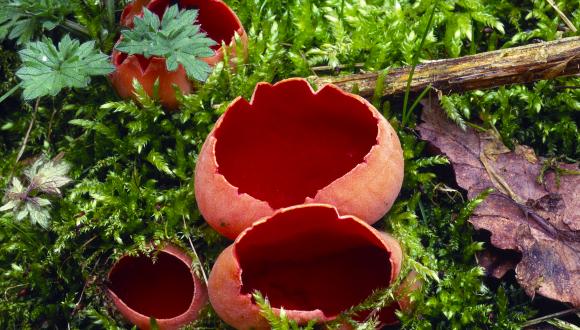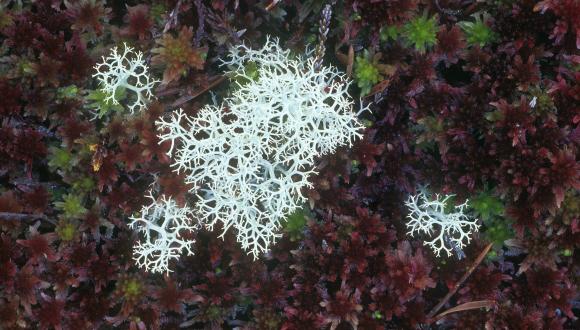Fungi
Fungi have been around for millions of years. Neither plant nor animal, fungi occupy a kingdom of their own.
More than just mushrooms, fungi recycle plant litter, help plants grow and are sources of many of our major medicines.
Fungi come in all shapes, sizes and colours (and smells). They occur all over the world, living on wood, roots, soil, leaves, insects, dung and even people. A fungus in Oregon, USA is the world’s largest living organism.
Our woodlands, grasslands, mountains and coasts provide special habitats for more than 12,000 species of fungi. Scotland is internationally important for the brightly coloured waxcap species that live on undisturbed grassland.
Scottish woodland provides homes for many fungi of conservation interest including the hazel gloves fungus and tooth fungi. Scotland is home to some species of puffball, such as the white-stalked puffball, which are not found elsewhere in the UK.
Ecosystem roles
Much of our wildlife depends on fungi.
Scotland’s fungi:
- exchange food with plants to help them grow
- tidy up fallen leaves and dead wood by decomposing and recycling
- provide food and shelter for wildlife including beetles, slugs and red squirrel
Uses by people
We depend on fungi to help produce:
- bread
- cakes
- biscuits
- beer
- antibiotics
- cholesterol-busting statins
- some paper and dyes
Some fungi are tasty to eat, but others are poisonous to humans. Always check with an expert and follow the:
Find out more on our Food and drink page
Threats to fungi
The main threats to fungi are:
- habitat loss
- high concentrations of nutrients
- soil disturbance
Protection of fungi
All wild plants and fungi are protected species to some degree. One fungus that occurs in Scotland, oak polypore, has added protection.
Fungi and their habitats are also protected as features on protected sites.
Find out how Scotland’s wild plants and fungi are protected.
Read our guidance for planners and developers.
How you can help
- Create a home for fungi in your garden such as a compost heap – fungi love damp shady spaces.
- Don’t fertilise an old mossy lawn. You’ll be rewarded with colourful grassland fungi.
- Leave large pieces of deadwood in your local woodland to support the many species of wood-rotting fungi.
- Watch out for events on our National Nature Reserves near you





